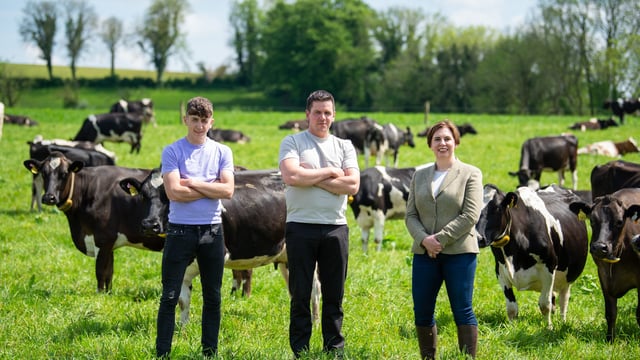Time to prepare for final milk recording and drying off
It is that time of year where farmers need to arrange their final milk recording and get their preparation for drying off underway.
Although we are still a couple of months away from drying off, for many herds around the country, it is time to start for planning for it.
The dry period is a crucial time of year for cows, as it is the time that the mammary tissue regenerates, repairs and prepares to produce milk again.
The dry period is also crucial in building up body condition score (BCS) in preparation for calving and the start of the next breeding season.
In terms of drying off, it is still early days, but there are a number of things that you can do now to make sure that you are prepared.
Blanket dry cow therapy is a thing of the past, where all cows in the herd are treated with dry cow antibiotic tubes at drying-off.
Giving antibiotics was traditionally the best way of preventing mastitis, but through more studies surrounding antibiotic use and antimicrobial resistance (AMR) this practice has since been reviewed.
The Veterinary Medicine Regulation requires farmers and vets to move towards selective dry cow therapy (SDCT), which is a more targeted use of antibiotics.
This requires the farmers to be more aware of the herd in front of them as farmers have to identify specific cows that need an antibiotic, rather than just blanket treating the whole herd.
The main purpose of SDCT is to protect the antibiotics we have by using as little as possible and to minimise the risk of AMR.
AMR occurs when an antimicrobial that was previously effective to treat an infection or disease , is no longer effective.
Ahead of drying off, many farms will have completed a scanning or will have records of served dates for their cows when you know the expected calving dates.
This should be a minimum of six to eight weeks, but cows should be body condition scored (BCS) to identify thin cows and or over conditioned cows.
The length of the dry period should be changed based on this, with thin cows requiring a longer dry period or maybe put on once-a-day milking prior to drying off.
Clipping excessive hair on cows tails and rear udders to ensure better hygiene is essential in the lead up to drying off while ensuring that all facilities, passageways and roadways are kept to a clean standard.
If there are still a number of cows that are yielding greater than 12L/day in the week before planned drying off, it wouldn't hurt to reduce their feed intake.
A milk recording within 30 days of drying off is essential to provide your vet with individual cow information to make sure the cows are prescribed properly.
This along with clinical mastitis history and milk sampling will make sure that the rights cows are picked out for SDCT and will minimise the risk of infection.
Any cows that have been identified as infected should be considered for removal if they are unlikely to be cured with antibiotic treatment.
By removing these problem cows, you will reduce the spread of infection to the healthy cows in the herd, and the need for recurrent antibiotic treatments.
To minimise the risk of mastitis or high SCC during dry off or the following spring, the message is clear and simple - start preparing now.





